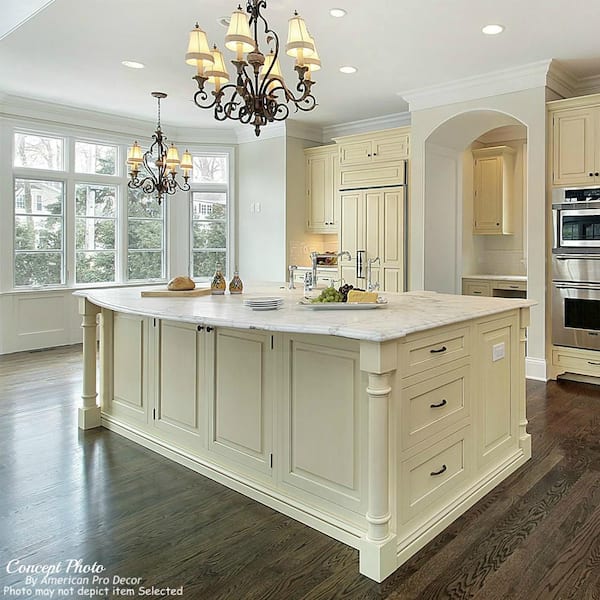Unique Kitchen Island Legs for a Personalized Kitchen Look
Unique Kitchen Island Legs for a Personalized Kitchen Look
Blog Article
Crucial Tips for Choosing the Perfect Eating Table for Your Kitchen Area
Choosing the excellent eating table for your cooking area is even more than just an issue of taste; it requires a comprehensive understanding of your area and needs. The shape of the table plays a crucial function; while rectangle-shaped tables suit bigger locations, round ones foster intimacy, and extendable choices offer flexibility. The table needs to harmonize with your cooking area's appearances and suit your household easily.
Procedure Your Room
Selecting the excellent dining table starts with a precise evaluation of your readily available room. This foundational action ensures that the table not just fits pleasantly within the space but additionally complements the general format and capability of your eating area.
It is necessary to leave ample area for chairs to be drawn out and for individuals to move around the table without obstruction. A general rule of thumb is to allow at least 36 inches of clearance from the edge of the table to the nearest wall or item of furniture.
Furthermore, assume about the variety of individuals you generally amuse and whether you require extra area for guests. Choosing an extendable table can provide adaptability, allowing you to fit varying numbers of restaurants. By properly determining your room, you prepared for choosing a table that enhances both the looks and performance of your eating location.
Select the Right Forming

On the other hand, round tables are superb for smaller sized kitchens or intimate events, as they advertise conversation by permitting everyone to deal with each various other. They additionally provide a sense of coziness and can fit well in tighter rooms as a result of their absence of sharp corners. Oblong tables offer the very best of both globes, integrating the length of rectangular tables with the intimacy of rounded ones, making them functional for various settings.
Square tables are an additional alternative, especially suited for square-shaped rooms. They develop a modern and symmetrical look, fostering an equal eating experience for all seated. However, they might be less useful for larger gatherings unless they include extensions. Ultimately, the form you select must align with your area measurements and way of living to make sure both form and function.
Product Factors To Consider
When selecting an eating table, material factors to consider are vital in establishing the table's toughness, upkeep demands, and overall aesthetic. Wood is a classic selection, offering classic appeal and effectiveness.
Glass-topped tables offer a modern-day, click to read more sleek appearance and can make an area appear bigger as a result of their openness. However, they call for frequent cleansing to protect against fingerprints and spots. In addition, toughened up glass is recommended for its extra stamina and safety and security.

Finally, composite materials like MDF (Medium-Density Fiber board) or plywood are affordable alternatives. These materials can mimic the appearance of solid timber yet may not use the exact same durability. They are typically much easier to clean but can be susceptible to water damage otherwise properly secured.
Eventually, the option of material must straighten with your kitchen area's design, your way of life needs, and your budget plan restrictions. (kitchen island legs)
Seating Capability and Comfort
How do you determine the best seats capability and convenience for your eating table? For a household of 4, a rectangular table of 48 inches long or a round table with a 48-inch diameter is typically adequate.
Comfort is just as essential. The height of the table ought to preferably be around 30 inches, supplying a well balanced ergonomic position for seated restaurants. Chairs must sit height of 18 to 20 inches to make certain a comfy dining pose. In addition, think about the chair style; upholstered seats and helpful back-rests can improve eating comfort considerably, especially during long term dishes.
Design and Visual Appeal
Choosing a dining table that matches your design and aesthetic appeal involves stabilizing personal taste with the existing decor of your eating area. explanation The table is often the centerpiece of the kitchen, and its design should enhance the general theme of the area. Whether your cooking area Check This Out flaunts a contemporary, minimal appearance or a rustic, farmhouse charm, the table you pick must balance with these aspects to produce a cohesive and welcoming ambience.
Consider products thoroughly; timber offers an ageless allure and can vary from rich mahogany for a typical aim to lighter oak for a modern feel. Metal and glass tables, on the other hand, can present a smooth, commercial edge to your kitchen area. Do not forget the table's form-- rectangle-shaped tables are timeless and functional, while round and oval choices can promote a more intimate dining experience.
Additionally, pay very close attention to details and surfaces. A troubled finish might add personality and warmth, whereas a shiny surface can add to a tidy, modern aesthetic. Ultimately, your table need to not just healthy perfectly right into your kitchen's style but likewise mirror your personal design, elevating the room both functionally and visually.
Verdict
In conclusion, selecting the perfect dining table for a kitchen demands mindful evaluation of space, shape, material, seating ability, and aesthetic harmony. Ultimately, an appropriate eating table fosters an inviting environment and fits the household conveniently, therefore boosting the dining experience.

When selecting an eating table, product considerations are extremely important in identifying the table's longevity, maintenance requirements, and general aesthetic. For a family of four, a rectangular table of 48 inches long or a round table with a 48-inch diameter is generally adequate.
Do not neglect the table's form-- rectangular tables are functional and timeless, while round and oval alternatives can promote an extra intimate dining experience. kitchen island legs.
Report this page